Yesterday
Lying between the hills of Pierrot and Moule-a-Chique peninsular, the meadow that is Vieux-Fort, a small community of the early 1900′ s, is being presented to St. Lucia’s populace and strangers alike as was the case in 1970 when Vieux-Fort had it’s D-Day.
Interviewing select persons—Mr. Hilton Mahy, a native of this town; George “Shine” Thomas who introduced steelpan music to Vieux-Fort; and Charlmers Peter Medouze who started carnival— the story of Vieux-Fort’s yesterday is told in emotional strains.
In the early years, sugarcane was king and was the basic source of employment. The sugar factories were owned and operated by the Duboulay-Bernard Company. This company was later sold to the Chase Company of Barbados, who established the Barbados settlement at Point Sabre.
The area south-west of the Vieux-Fort-Laborie Highway, taking in the Texaco Gas Station and other buildings between the highway and the Vieux-Fort Square, encompassed the sugar factory, and there ran the Vieux-Fort river, which emptied in the Caribbean Sea at Lamboshi. A railway track that ran along Malgratoute Micoud Road (Clarke Street) and Jetty Street allowed rail carts to take their cargo of sugar cane to lighters and then onto ships anchored in the harbour.
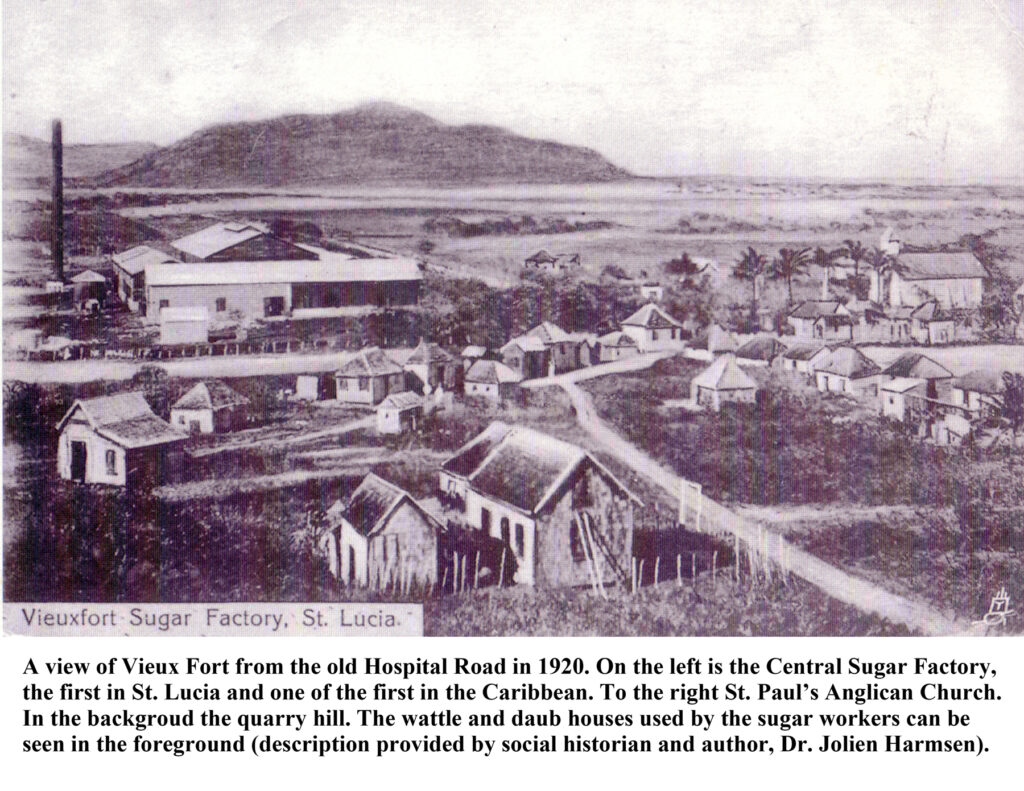
Vieux-Fort, a small community hemmed in by the Mangue (the swamplands), had street names like Malgratoute Micoud Road, Victoria Street, Jetty, Giraud, and King Street. King Street was named after a town warden named King who built it. Croix Mission was the name for the location where the cross still stands at Louis Boriel’s corner.
Anse Raphael Beach, the area that is now the new development port facility with the finger pier the Americans built during World War II, was the most popular beach in the area, and remained so up till when the Diato Kogyo company changed that in 1990-91.
Religions of the day were the omnipresent Roman Catholics and Anglicans; the Salvation Army having a presence also. The original Catholic Church was on Jetty Street, the land now occupied by the Fisheries Department.
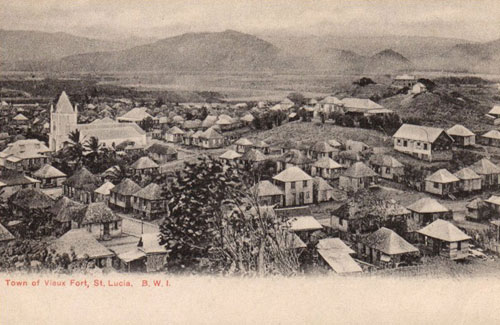
Besides the religious holidays of Easter, Christmas, and Corpus Christi, cultural entertainment was the La Rose and La Marguerite Flower Festivals. Quadrille dancing and its derivatives were the mode then. Clarke’s theater stood on the grounds of the Vieux-Fort Bible Church. Back then the only masquerading was at Christmas time.
Sporting activities were predominantly football and cricket. Football was played at the back of the existing Anglican cemetery where now sits Saphire Club, Samtor supermarket, and the Samuel’s residence. Even as far back, sports rivalry existed between Vieux-Fort and Castries. While Castries players played with football boots, their Vieux-Fort counterparts mostly played barefooted. One notorious player for Vieux-Fort was Ralph Giraudy who was noted for injuring players. The cricket field was in the Louisville area.
Besides the sugarcane cultivated by the plantations, the Indians planted rice. Other food crops were potatoes and the general produce we still have. Fishing was done by most local men. A strange reason for this, I was told, was due to the expectations of the supervisors at the factory. Whereas one could take up mechanic or other trades at the factory, the supervisors indulged in trade-offs. Though unspoken it was well understood that the men seeking these trades had to have a female relative who would become the supervisor’s mate. With many of the men not agreeing to this form of prostitution, they took to the sea.
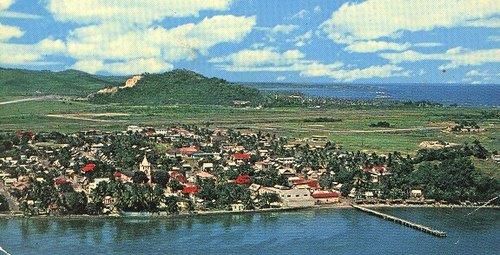
Commercially, M & C was the old friend, being the general store. But there were also McFarlane Jr. and a few other small shop owners.
The post office sits on its original location and it used to house both the police station and the courthouse. Schools here were primary standard, up to the sixth.
Renowned for his brilliance as a lawyer was Elwin Augustin, who, in defense of his client for stealing one of only two shirts of its kind in Vieux-Fort, had his client to steal the other.
By the time the second world war was brewing, the Americans secured a lease for Vieux-Fort from the British for nearly one hundred years. These were the boom years for St. Lucia. Construction was everywhere. The dock, hospital, and an electric power station were being built, the runway was being laid. Vieux Fort had a new wave of development.
Mr. Mahy says he remembered that the first aircraft to arrive in Vieux-Fort was an 8-18, which landed on a good Friday, on a dirt strip at what is now Hewanorra International Airport.
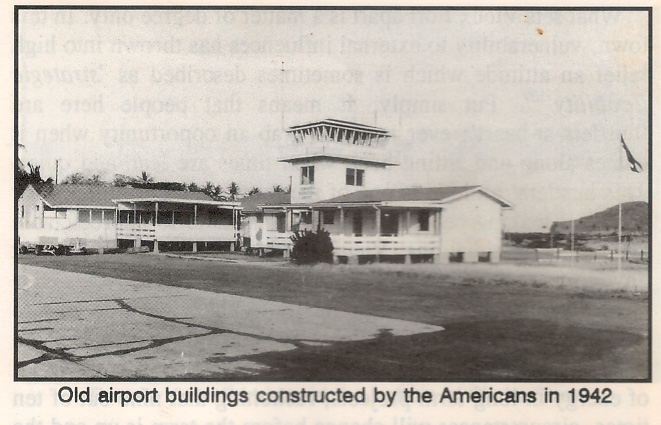
The now industrial estate on the St. Jude’s Highway was the American Contonment. Fort Queen was the American name for the hospital, and Fort Queen was twined with Fort Lauderdale in Florida. A second or alternative hospital was built with Fort Queen; it was an underground version below the existing St. Jude’s hospital. It was designed to be used in case of attack by the enemy on the above-ground structure. However, it was decided that the underground structure would be condemned when the Americans left. After the war was over, in 1945, a cooling of American involvement in Vieux-Fort existed. But five years or more later they were back, in the 1950s, and enter George “Shine” Thomas with his steelband, and Charlmers Peter Medouze with carnival, and a lot of the good with the bad. Shine told me he played and taught steelband in the schools at the priest’s request. On afternoons he would teach the art to young men and women.
Upon the Americans’ return, they built a radar tracking station at Moule-a-Chique and rendered the area east of the town out-of-bounds to the locals. Workers had to go through the gates on their way to work. The gate was near Inter Island Supply. Vieux-Fort had again become a boomtown. The rum shops and bars sprung up everywhere. Upstairs the Co-operative Bank was the Four Winds Bar, Chez Bamboo was nearby on Garvey Street. Clouds Nest, the only hotel in town and located on the hill near the cross called Croix-pare-dis, was owned and operated by Gildette Williams. The Yankee dollar was everywhere, and the common request on seeing an American passing by was: “Hey Joe, give me a black penny,” and generally the coins would be tossed in scorn to the ground and the scrambling for possession would begin by the locals. Such was the norm of the time (along with the work that seemed plentiful) that prostitution was very prevalent.
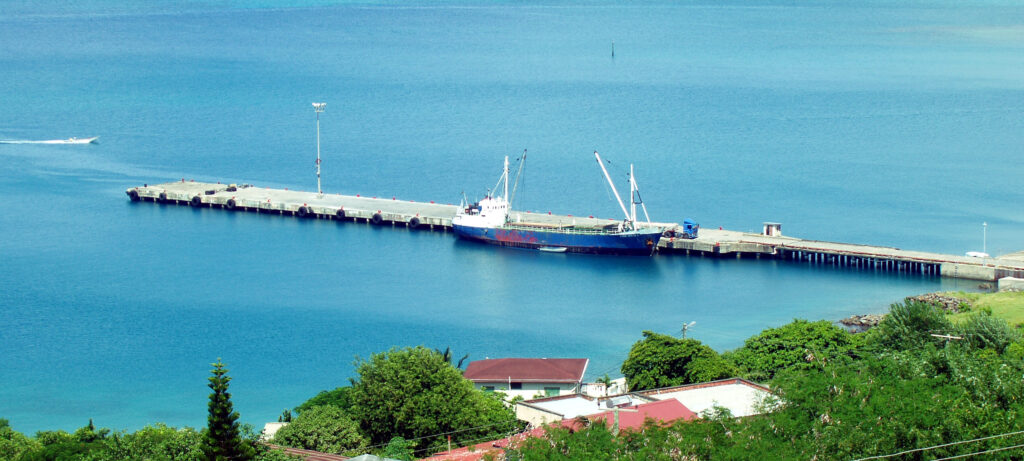
“Shine” said to me that he and Charlmers were making the Yankee dollar, and they spent it as lavishly as it came. Had he saved then he could have had quite some financial substance today. But he and others like him choose to be one day millionaires as was the popular term. They didn’t have to work as such; they just had to frequent the bars, get women for the Yanks and they were in the inner-circle. In those days the money was so much that his kind used to light their cigarettes with flames from their dollar bills. And they always ensured that their pickings of the day did not remain in their pockets the next day. “No stale money in our pockets,” they said.
But this era would pass as has everyone before it. But when the Americans left, they left behind a people in Vieux-Fort who had wasted their substances, never thinking that the Yankee dollar would fly away. Only a few had made good by saving and investing their American earnings, and also those who had cached away the fruits of their enterprising effort to get rich at the appointed time.
Left to find its way, Vieux-Fort seemingly became a ghost town. The American void left the masses who loved to have the black penny thrown to them in a state of depression.
St. Lucia, however, was changing. Bananas was beginning to take sugar’s place, the last Birth Administrators were handing over the reins of government to St. Lucians, Adult suffrage was achieved. Yet Vieux-Fort became reclusive, waiting.
As the decade of the 1950s ended, a new wise man, Rudolph St. Hill, asked the question, “After the closing of the base what?” He lived long enough to see the banana industry come to life in St. Lucia, but more significantly he was one of the town fathers who requested of the Americans that a secondary school be built in Vieux-Fort. Today their grandchildren are benefiting from that request for secondary education.
During this time Vieux-Fort saw the emergence of various religions, and missionaries of various denominations were here. Culturally, carnival was here, thanks to its pioneer Charlmers Peter Medouze, who in 1955 came up with the first carnival band, which depicted Palmolive soap. In the ensuing years, his bands were Fab Detergent, Canary, World War 2, Super Kentone, Bengal Tigers, Slaves of Rome, and Ovaltine. Charlmers was also the organizer of the first carnival queen and queen of the band shows. He also had his calypso tent and single-handedly composed and sang his calypsos. However, by 1976 he made his exit, giving way to a carnival committee headed by the late Murray Thomas, with Peter Henry, and Mary “Babie” Maxwell. At that time too, came the musical bands of Southern Brothers Orchestra, High Clefs, Rhythmites Combo, followed much later by Outer-Circle. The steelband bands—Tropicana, All-stars, and Commandoes—were also filling the Vieux-Fort air with music.
Sports-wise, organized football teams began to emerge in the fifties, with names like Blackpool, Sea Wolves, Wanderers, Casuals, Dynamoes, South Sports, V.F.U.C. The competition boasts such stars as Patrick “King Cassav” Montor, Bengie Lashley, Peter Henry, Hughs Michael, Lennie Jules, Francis “Shark” Fontenelle, the Samuel Brothers, Desir Moses, Thomas “Herbie” President, Lucas Mathurin, Joseph “Wills” Mathurin, and more. No trophies were played for then, but the competition was won by the team with most wins.
Cricket was organized and played by the Barbadians, Cardinal Blanman and Brian Crick, to name a few. As the locals caught on, they were drafted into the team. Locals like McPhil JnBaptiste, Thomas “Jam Bick” Edgar, and George Harris, were some of the players of talent.
Netball began then, and its young ladies did Vieux-Fort proud. Athletes with names like Frances Weeks, Ella Collymore, Margrete “Ma. Bois” Cherubin, were the pioneers of Vieux-Fort’s netball. As time took its toll on their youth, a second generation that included Katie Tobierre, Norma Valmont, Theo Joseph, and Mary “Babie” Maxwell continued the netball upbeat Vieux-Fort enjoyed. Their archrival then was Soufriere, and it was always a pleasant sight to watch this contest.
The decade of the early sixties and seventies perhaps brought out the best in Vieux-Fort’s netball. The general sporting attitude was upbeat. Under the guiding hands and leadership of Laurie Auguste and his wife Acyntha, the three disciplines of cricket, football and netball received national attention. For the first time the national netball team comprised over 50 percent of Vieux-Fort players. Marette Mahy, Geneva Trim, Ednita Palton, Lorna Marius, Cynthie John, Jeanette JnMarie, were on parade for Vieux-Fort, although Miss JnMarie missed the tour because of injury.
Cricket realized its bright and glorious moments with Allan “Cherri” Mesidore, Clifford “Sam” John, Ryle JnMarie, Rufus Johannes, Bonny Poyotte, Eldridge Stephens, Vibert Joseph, Michael “Dicki” Lubin, Charles Cyr, Nelson “White” Harrison. Added to this squad in time were Leo Charlery, Alfred Harris, Winston “Gary” Daniel and more. The most balanced cricket team, and perhaps the best. Out of this cast a number of these players were selected for trials for the national side, and our first ambassador should have been Michael Lubin, a superb fast bowler. Later came Monty Wilfred, Franklin, Connie Henry, Winston Lubin, Ronald Norton, Eusebius Saltibus, Murray Findley, who in time made the national side.
Out of Vieux-Fort came Gregory “Alganan” Bourne, the best and most talented footballer of this time in St. Lucia. Thus, it was no surprise that he and Eldridge Stephens made the national side in 1969-1970, playing in the Windward Islands Popham tournament. And while St. Lucia lost 6-1, Bourne’s goal was the gem of the match. Because of that goal, upon his return to St. Lucia he said to us, “I didn’t lose”.
During this period, Drifters was at the top of the football competition. They possessed Marcellous “Chorbor” Eristhee, Vieux-Fort’s Rolls Royce centre-forward, who perhaps was the best exponent of the cha-cha-cha style of dribbling, created by the Brazillian, Garancha. He also did a back-peddle dribble. Eristhee by nature was a calm and introverted person, but always he would come to life on the football field. Whenever he had control of the ball, there seems to be a romantic relationship between him and the ball. Chorbor seemed like he floated on air, and caressed the ball with such gentleness till he was ready to put it away for a goal. The imposing figure of Bathel Peters, the full-back for Drifters, was also no pleasant encounter for opposing forwards at that time.
Dames had stamped their authority on Vieux-Fort football, while the local competition incorporated Laborie and Micoud. Dames crushed every opponent in their way. Noted for producing quality football, they ousted Peter Henry’s Wanderers, who had earlier set the Drifters adrift, and asserted their authority with defeats in excess of six goals to nothing. Drifters, Wanderers, Maples, Santos, Saints, Malverns, Titans, Laborie, Micoud, and those who came after, all felt the sting of Dames. When there was no one left to beat in the out districts, Dames took its show to Castries to compete at the highest level, facing C.Y.O. in an epic two-day final in 1970 for the cup-winners cup. During their crusade in Castries, they remained among the top three teams in St. Lucia and were twice champion of champions, in 1970 and 1972.
Dames was noted for developing its forwards in pairs and their three famous pairs were Irvin “Didi” Prescott, and Gregory “Alganan” Bourne. Bourne has the record for the most goals in a single match—nineteen—the one in which Dames beat Aedes 25-0. Then came Antonius Alexander “Kyle” Alexander and Kenneth “Myson” Mark, and lastly Stephen “Abra” Edwards and Nicholas “Zico” Marcelin.
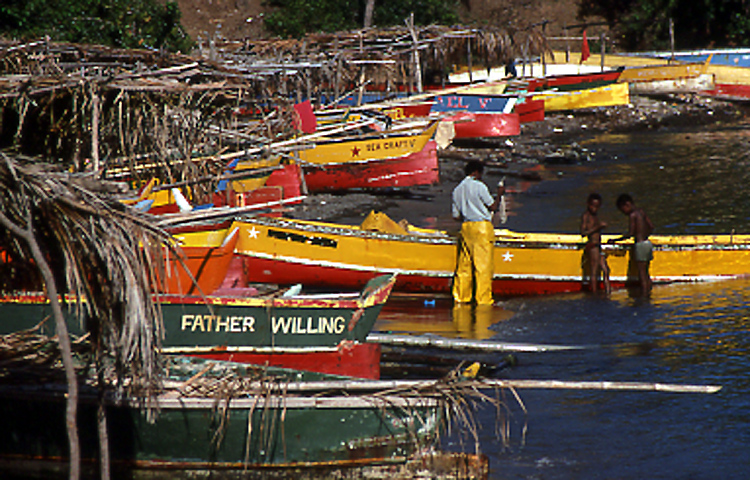
The main Vieux-Fort attraction in the seventies was the Halcyon Vs. Dames matches, which always guaranteed excitement and a parked field of spectators. Halcyon with its complement of stars that included the likes of Gary, Tye, Gregory Peter, Arnold Dudley, Jeff Elva and Alcee, matched against Dames’ Kyle, Myson, William, Abbot, Phils, Marcus, and others, was never a contest for the weak-hearted.
While this Halcyon-Dames thing was going on, two new stars were born, Marciano Prince and Ronald Norton. In the Cable and Wireless youth series of the mid-1970s, when he first made his grand entry on the national youth side, Marciano was dubbed the prince of youth football. Over the period in which his playing days allowed, he maintained a high standard in his performance, playing for both Dames, Vieux-Fort and the national side.
Ronald “Ferres” Norton was perhaps the most complete sportsman, for he represented St. Lucia in both Football and Cricket, the first player from Vieux-Fort to do so. Norton had the kind of charisma that few players before him possessed. On any day that the Uptown Rebels played, his presence energized his whole team.
There is a void now in Vieux-Fort for quality players of the caliber of these great players Vieux Fort boasted of, from the days of Patrick Mantor to Ferres. The vacancy left by these phenomenal players waits to be filled by the youths of today. They have everything going their way, so they can surely emulate their predecessors, if only they will seize the opportunity.

This era is gone. Dames, a legend in its time, is still spoken of in glowing tribute to a team that did Vieux-Fort proud.
Today cricket is a softball game, and football has known its better days. Professional coaching and benefits abound, yet an air lacking of purpose exists in the attitude towards the games as they are played in Vieux-Fort.
Vieux-Fort grew then politically and emotionally. On the political front, George Charles’ Labor Party ruled. In Vieux-Fort, Clive Compton was the Labor Party’s representative. Antoine Theodore was the People’s Progressive Party candidate in opposition. The formation of Town and Village Councils was shaping and memory seems to note that Walter Warrican was the first Chairman of the Vieux-Fort Town Council followed by George DuBoulay, with Caesar Jules being the first Town Clerk.
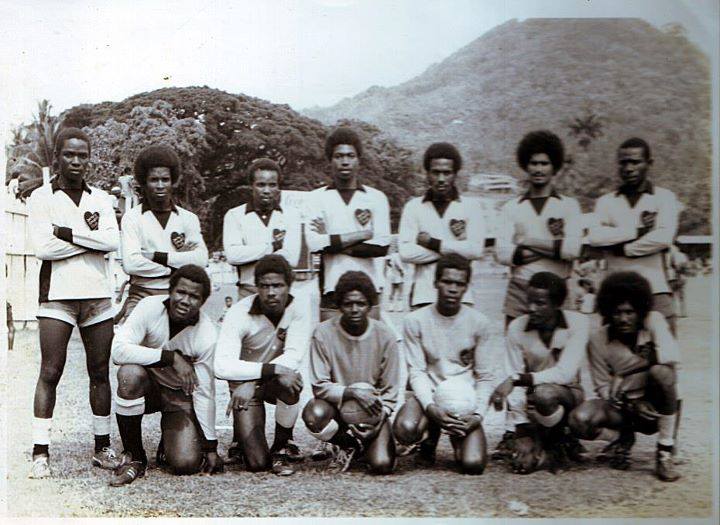
In time the politics changed somewhat, Theodore giving way to Henry Giraudy, who rivaled Clive Compton for the Vieux-Fort seat as a P.P.P. candidate. Vieux-Fortians was fortunate then to have these two brilliant lawyers to handle their legal affairs. By the mid-sixties the P.P.P transformed itself into the United Workers Party under the chairmanship of Henry Giraudy, who won the Vieux-Fort seat.
Geest Industry was into bananas, with Port Vieux-Fort coming alive for two days every week since 1953. By 1954 Antoine Theodore established the Vieux-Fort General and Dock Workers Union which has since supplied labour for stevedoring at Port Vieux-Fort. Development of Vieux-Fort was truly on.
When statehood came, followed by independence, Vieux-Fort had its D-Day, an extravaganza that offered the town as the industrial capital. Winera was laid down jointly by Papallera Industrial of Venezuela and the four Windward Islands, for producing cardboard boxes to ship their bananas to the United Kingdom; Halcyon Days Hotel was built; the American ninety-nine (99) years lease on Vieux-Fort was given up so Beanfield Airport became St. Lucia’s to develop. Accordingly, the Canadian Company, Seroc Inc., resurfaced and lengthened the strip, the Terminal was completed, and the night the Hewanorra Airport was lit it heralded a new day for Vieux-Fort and St. Lucia. Vieux-Fort became the gateway of St. Lucia.
Education received a boost. In 1963, with aid from the Canadian Government, the Vieux-Fort Senior Secondary School opened its doors to students. Secondary education became available to all as against what it was before.
Operated by the Sisters of the Sorrowful Mother of the United States, the American World War II hospital was renamed St. Jude’s Hospital in 1967-68. The garbage collection changed from being horse-drawn (by James “Totar” Joseph) to being hauled away by a dump truck.
Today
Over the years the government has sought to develop the industrial base, using Vieux-Fort with its flat land as the pivot. Today a number of factory shells are in place to cater for offshore industries.
Vieux-Fort with its own population explosion has broadened its boundaries to allow for this human expansion. The Mangue has had to take more than its share. So also has the Bacadere. More Schools have been built to accommodate the fruitful, multiplying, and replenishing command.
Today garbage collection is done with garbage trucks designed for that purpose. No longer is the Lamboshi a popular place for Saturday fun and frolic for school children. A Dengay (derog) is in its place now.
Sports today ought to have been at its highest point considering education is prevalent and everyone can have it, yet cricket today is played by a young generation of skirted youths, who scare at the sight of a cricket ball. The irony of the misplaced fear is that today the game comes along with much more protective gear (including helmets) than before.
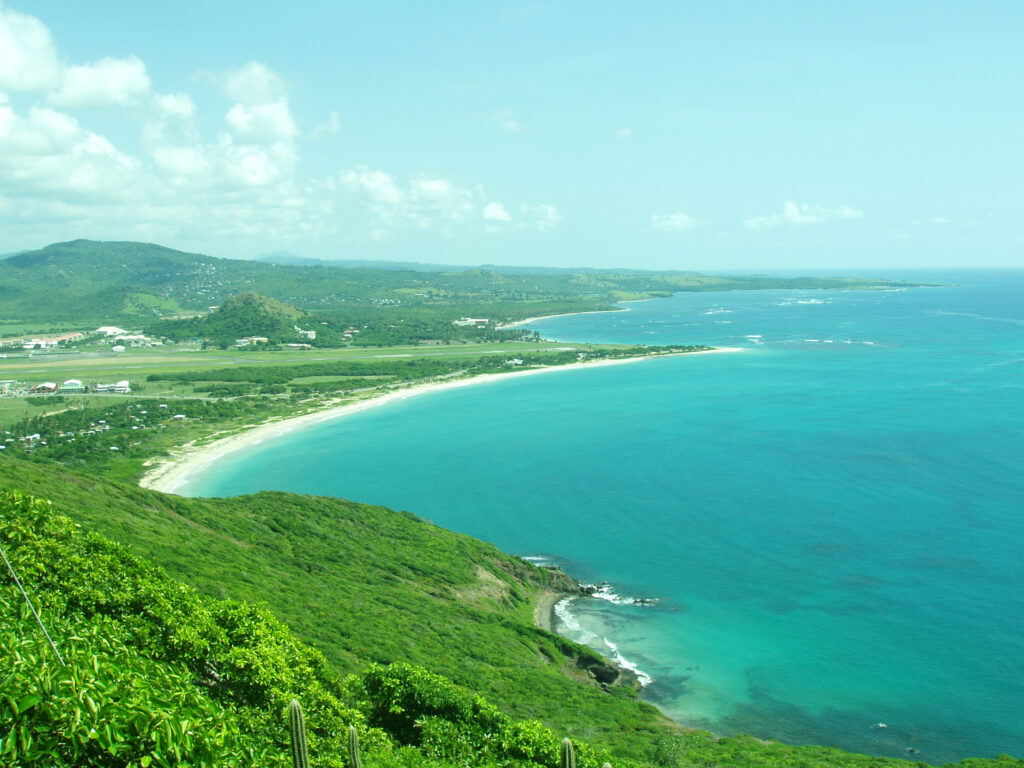
More settled today, Vieux-Fort in its development has broadened its borders. Small businesses of yesteryear have mushroomed into million-dollar entities. One prominent example of this is Miss Dona Charles. What a success story this lady has become. Having started with selling coals and other trinkets, she now owns a general store, modern buildings, one of which houses a medical university. By extension, the ripple effect of her success and enterprise has transcended to her extended family.
Commercially it has never been so good in these parts, everyone seems infected by the virus of development, but for the omnipresent Barclays Bank of yesterday. There is a market share for Scotia Bank, Canadian Imperial Bank of Commerce, and two local banks—National Commercial Bank, and St. Lucia Cooperative Bank—have staked their claim. Construction has sustained a place in the life of Vieux-Fort’s economic growth, and its countenance has an architectural sophistication that speaks of a state of healthy development.
Everything seems to be in place for Vieux Fort to take off. The infrastructural base tells the tale of a modern Air and Seaport. The management of the region’s development is aptly placed in the hands of the National Development Corporation. Goods and services are readily available, the health services are there, education is there for the taking, and there is little reason to doubt why Vieux-Fort cannot, at last, assume its rightful place in the total development of the country.
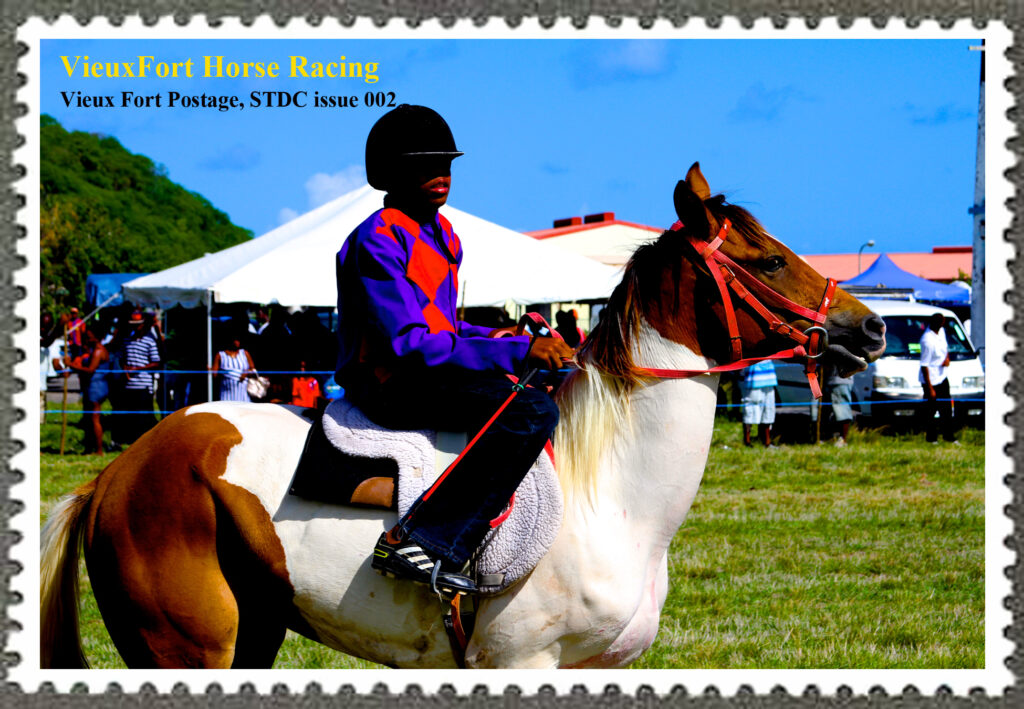
Tomorrow
At the threshold, for this region, tomorrow appears to be an industrial gold mine in development. Every good and service imaginable is up for grabs. The Vieux-Fort Phoenix has come to life after decades of hibernation to spread its concept of development.
The bold initiative taken by the Southern Development Committee is giving Vieux-Fort back its self-esteem. It is a true prophecy that Vieux-Fort will have its day. This is it, that day is here.
Vieux-Fort offers sportsmen and women of the highest standards. It offers secondary school graduates of academic excellence, and an economic base that is strong. Its offering of the factors of production is complementary to the developer, the businessman, the industrialist, and for that matter to anyone who is ambitious. Vieux-Fort is ripe for the picking.
A new conversion pervades the community. After all the trials, tribulations, and frustrations of yesterday, tomorrow holds a future of sustained development for a people who suddenly realize that hard work and faith in God can move mountains. A new realization engages the entrepreneurial mind. That one who dares to dream and follows that dream to its conclusion will succeed.
I see a community that has gone through a gestation period for years, and now it is ready to issue from the womb of yesterday. Vieux-Fort the new frontier, a lost horizon found, stands proud in the sunshine, and swept by the cooling breeze of the Atlantic, beckons.
Can anything good come out of Vieux-Fort? Come and see for yourself…
![]()
